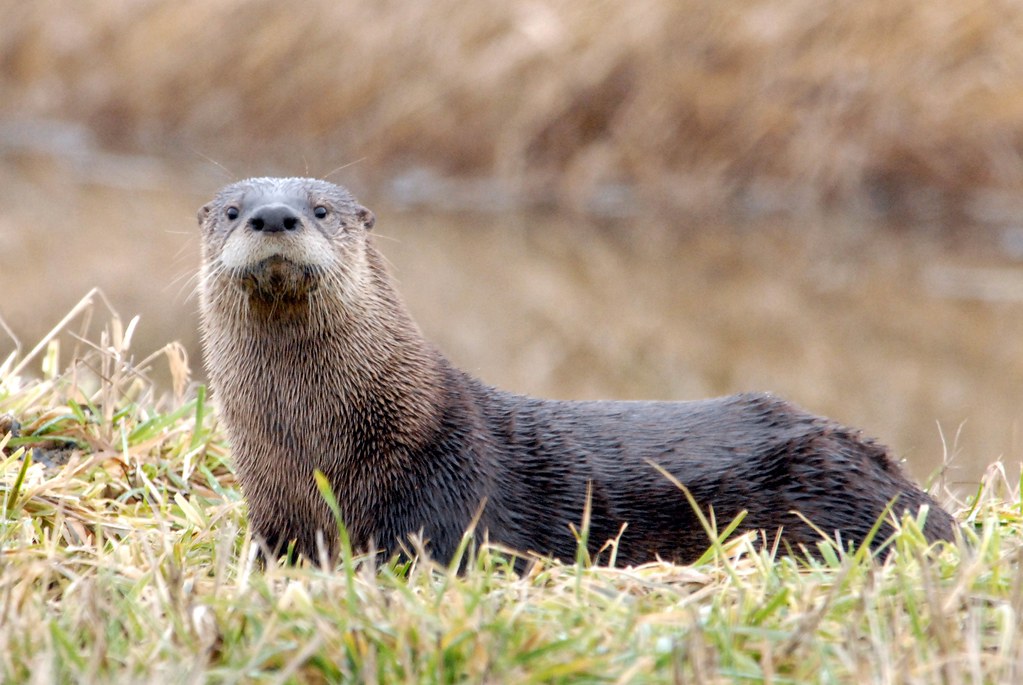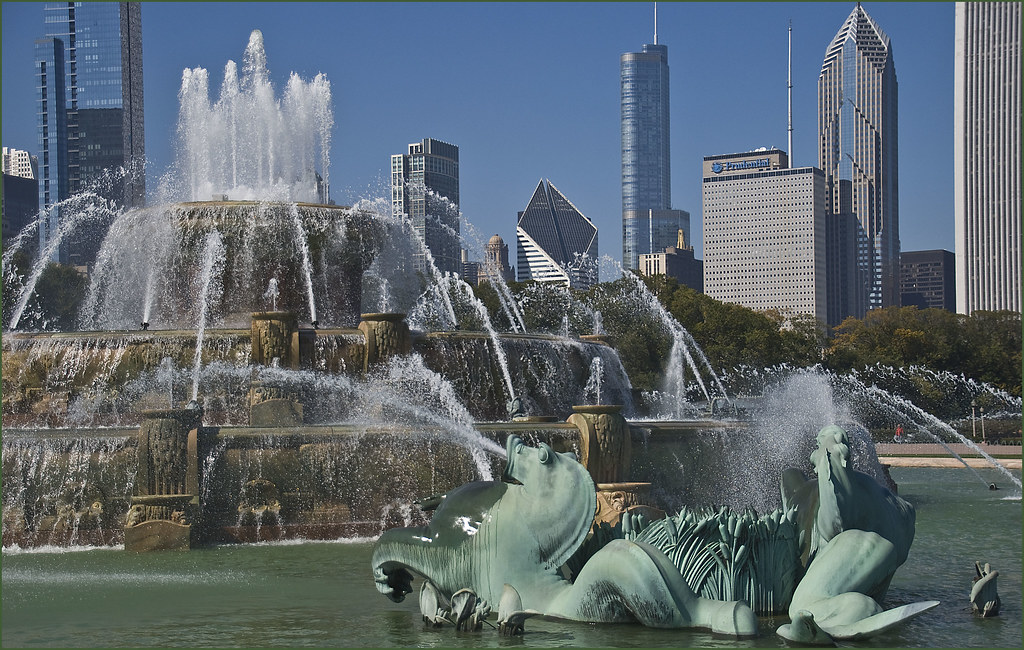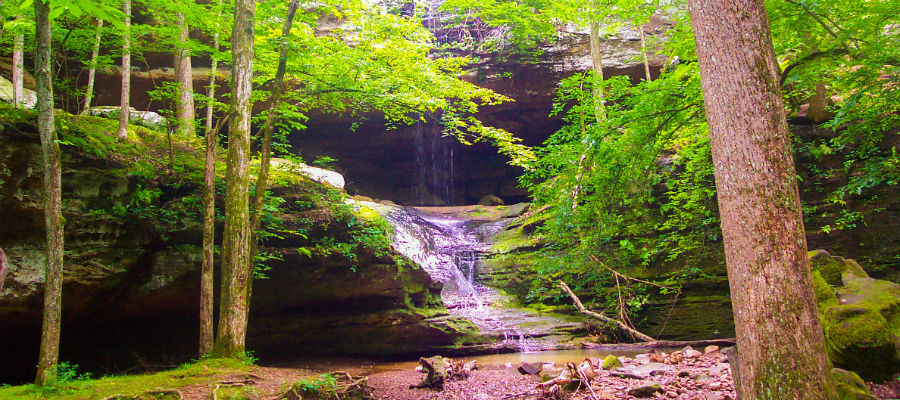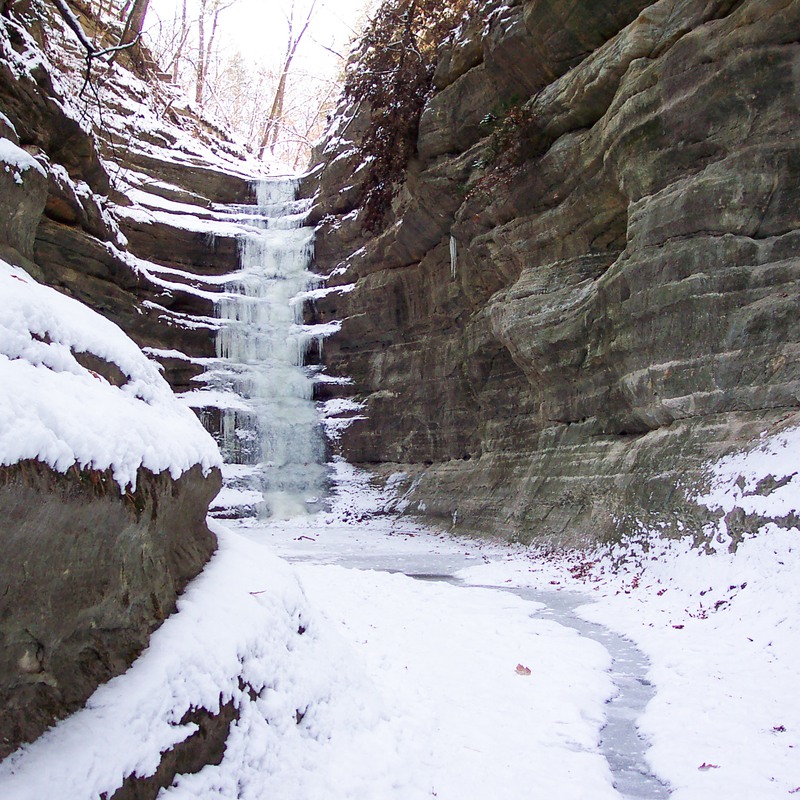- Details
 North American river otters were once common throughout Illinois. This species of otter is the largest member of the weasel family, and they reside in rivers, streams and lakes throughout much of the eastern and northwestern United States. While native to Illinois, their population was greatly reduced after Europeans arrived in the 16th century.
North American river otters were once common throughout Illinois. This species of otter is the largest member of the weasel family, and they reside in rivers, streams and lakes throughout much of the eastern and northwestern United States. While native to Illinois, their population was greatly reduced after Europeans arrived in the 16th century.
- Details
 Grant Park, proudly referred to as “Chicago’s front yard,” is a 313-acre public park located right in the heart of the city’s central business district. It is home to notable features like Millennium Park, Maggie Daley Park, Buckingham Fountain, the Art Institute of Chicago and the Museum Campus.
Grant Park, proudly referred to as “Chicago’s front yard,” is a 313-acre public park located right in the heart of the city’s central business district. It is home to notable features like Millennium Park, Maggie Daley Park, Buckingham Fountain, the Art Institute of Chicago and the Museum Campus.
Chicago officially designated the land as a park in 1844 under the name of Lake Park. It was renamed for President Ulysses S. Grant in 1901. The park was expanded through land reclamation, with several expansions utilizing excavations from a freight tunnel network under the city.
In the 1910s and 1920s, the sites for the Adler Planetarium, Field Museum of Natural History and Shedd Aquarium were parceled out, creating what is today known as the Museum Campus. Additionally, Grant Park holds many pieces of public art, including a statue of Abraham Lincoln, the sculptural installation “Agora,” and “Cloud Gate,” also known as The Bean.
The park annually hosts some of Chicago’s biggest festivals, including Taste of Chicago, Lollapalooza, the Chicago Blues Festival and the Chicago Jazz Festival.
A centerpiece of Chicago, Grant Park provides the city with vast outdoor space and a place to gather for a diverse range of events. To learn more about the park, events and hours of operation, visit the Chicago Park District website.
- Details
 Southern Illinois boasts dozens of unique state parks and recreational areas, including the scenic Ferne Clyffe State Park, which covers 2,430 acres in the heart of the Shawnee Hills.
Southern Illinois boasts dozens of unique state parks and recreational areas, including the scenic Ferne Clyffe State Park, which covers 2,430 acres in the heart of the Shawnee Hills.
Impressive rock formations can be seen from almost all of the park trails, but two of the best-known sights are Hawks' Cave, a 150-foot-long shelter bluff, and a 100-foot-tall intermittent waterfall on the Big Rocky Hollow Trail.
- Details
 During these winter months, it is hard to get outside. That’s why the featured park of the month has it all, and Starved Rock State Park showcases the best of nature that Illinois has to offer. Right outside Utica, many trails give visitors the opportunity to see natural habitats and beauty during these cold winter months, and with less people coming to the park, the noise pollution decreases and allows for wildlife to flourish.
During these winter months, it is hard to get outside. That’s why the featured park of the month has it all, and Starved Rock State Park showcases the best of nature that Illinois has to offer. Right outside Utica, many trails give visitors the opportunity to see natural habitats and beauty during these cold winter months, and with less people coming to the park, the noise pollution decreases and allows for wildlife to flourish.
Walking along the Illinois River, you will see massive sandstone bluffs with many wooded trails perfect for hiking. Some lead to scenic spots like a massive frozen waterfall. Don’t forget to bring a pair of binoculars because this is the prime season to spot bald eagles, turkey, deer, and many other animals that inhabit the Illinois wilderness.
Starved Rock State Park continues to be one of the state’s most popular natural attractions. With more than 2.4 million people visiting the park last year, it continues to provide examples of the beauty that lies within Illinois. While 68% of the parks visitors are from May to October, the winter months prove to be just as breathtaking to explore and discover on your visit to Starved Rock State Park.
For more info click here
- Details
 When dog owner Todd Agosto struggled to find a dog park in the south side of Chicago, rather than traveling to a different neighborhood, he built one instead.
When dog owner Todd Agosto struggled to find a dog park in the south side of Chicago, rather than traveling to a different neighborhood, he built one instead.
Created on a series of abandoned tennis courts in the Jackson Park neighborhood, Jackson Bark has become the third largest dog park in Chicago and the only dog-friendly area in the far south side of the city.
Agosto, who is the proud owner of a pit bull and a German shepherd, first started building the community dog park in 2014. He used his own funds and did most of the work to help create the dog agility and obstacle course.
More than 90 percent of the materials Agosto used for the dog course were salvaged from leftover construction projects in the surrounding neighborhoods. For instance, Jackson Bark’s handmade agility equipment includes recycled tires built into steps that dogs can climb.
The park also boasts two separate play areas, 100 pieces of equipment and a wide variety of toys. Additionally, because it’s equipped with lights, Jackson Bark is one of the only places in Chicago where dogs are welcome after dark.
Although Jackson Bark is not officially recognized by the Chicago Park District, the informal site has become beloved by residents and dog owners all throughout the south side. It is completely run and maintained by Agosto and volunteers from the community.
Jackson Bark recently celebrated its third anniversary on August 26, which also happens to be International Dog Day.



